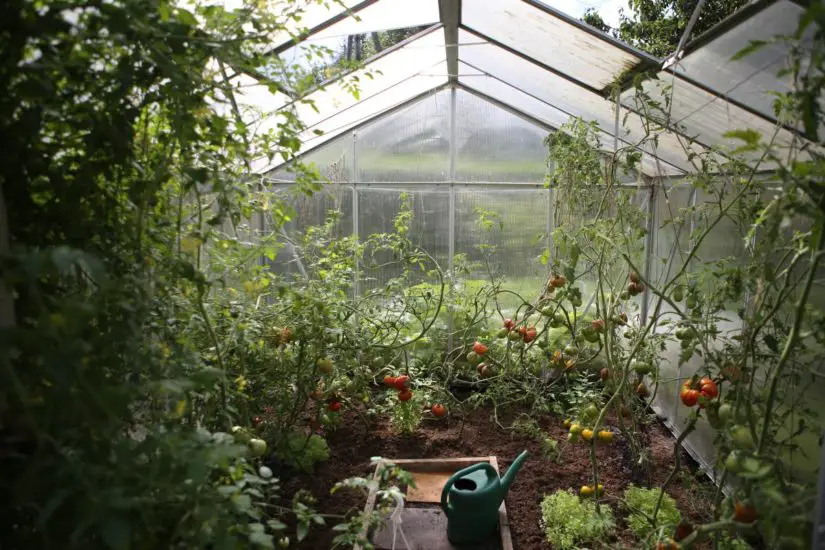Greenhouse humidity control is important for many reasons. First, humidity excessive humidity levels predispose plants to fungal infections. Too much moisture also often creates conducive conditions for various pests and weeds.
On the other extreme, too little humidity can negatively impact crop health. For instance, one of the most widespread humidity problems, grey mold, occurs due to a sudden drop in humidity levels. Powdery mildew is also common.
As such, it’s critical that you keep your greenhouse at the right humidity level without making it too wet or leaving it too dry. But how exactly can you do this? There are a couple of steps you can take.
Regular watering
The most important tip is to water your greenhouse crops regularly. In general, keep three things in mind during watering to keep humidity levels just right. First, don’t overwater. Too much watering increases the risk of over-humidification. Secondly, avoid water puddles. You want to water evenly without leaving standing water anywhere.
Finally, water early in the day. This way, any water droplets on the plant leaves will dry out during the day, further reducing the risk of over-humidification.
Improve air circulation
Unfortunately, perfect watering levels arent easy to achieve because of natural factors. For instance, if you just had heavy rains in your area, humidity levels in the greenhouse can rise above your ideal levels. The same is possible when it’s too hot outside. Why? Because relative humidity is temperature-dependent.
An important greenhouse humidity control measure that can help get around this problem is to improve air circulation. Proper airflow throughout the greenhouse prevents moisture from sitting on the plant leaves as temperatures drop below the dew point.
Space your crops right
Many gardeners forget that moisture builds up in thick canopies. For instance, if you plant kale and the spacing is so squeezed that the kale leaves form a canopy that creates a shade around the roots, the risk of moisture building up around the ground is very high. Adequate spacing goes a long way to solve this problem because transpired air can move more freely throughout the greenhouse, from the soil below to the space above.
However, if you notice that individual plants have formed canopies in your greenhouse, keep the soil below the canopies dry, well ventilated, and make sure the canopies don’t overlap.
Ensure proper weed control
Weeds are a persistent problem in greenhouses. For instance, the hairy bittercress, yellow wood sorrel, and spotted spurge are constant features in many greenhouses. Besides the risk of harboring pests and diseases and competing for nutrients, light, and oxygen with the crops, weeds also contribute to greenhouse moisture issues. Remember that the leaves of weeds contain water, and they release the water during transpiration, just like other plants. This can lead to moisture buildup.
So, you need to adopt thorough weed control practices. First, take preventive measures, including sanitation, to avoid weeds altogether. Then follow up with hand weeding, herbicides, and other practices to remove existing weeds.
Ensure well-drained floors
You’re probably wondering how a well-drained floor helps with humidification and dehumidification. A common cause of excess humidity in the greenhouse is runoff following heavy rainfall. Runoff raises greenhouse humidity levels naturally and poses a big problem if not controlled.
Well-drained greenhouse floors help reduce puddles. They also prevent over-wetting. Fortunately, it’s not too difficult to ensure proper drainage. First, consider raising one side of the bed. Alternatively, install drainage tile mats to handle runoff. However, keep in mind that the drainage tiles must also be installed at the right elevation and slope.
Select the right glazing type
You can also enhance greenhouse humidity control by selecting the right type of glazing. For instance, consider double-glazing rather than single-glazing. Double glazing ensures better insulation for improved temperature control. Additionally, double glazing helps fight condensation. It’s harder for conditions inside the greenhouse to reach dewpoint with double glazing than single glazing.
Above all, some glazing materials come with anti-drip agents that help curb condensation. However, you can also purchase spray anti-drip agents separately.
Consider desiccant dehumidification
Desiccant dehumidification is a modern technology that employs chemicals that absorb water vapor. For instance, some companies use salt to absorb excess moisture in the greenhouse then use energy to regenerate or dry the desiccant.
The only challenge is that this technology can be expensive. Additionally, energy efficiency becomes an issue. However, advanced desiccant dehumidification technologies offset the extra energy requirements by “borrowing” heat and later returning it to the growing zone. Nevertheless, you need a professional to install and maintain the system.
Summary
There are many other steps you can take to pursue greenhouse humidity control. For instance, ensuring a proper greenhouse pitch and maximizing ventilation can help. It all comes down to commitment.





